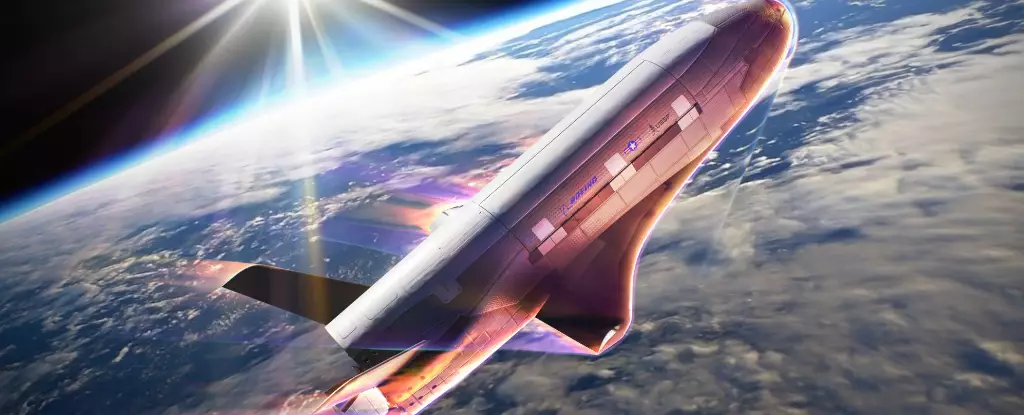Since its inaugural flight in 2011, the X-37B Orbital Test Vehicle (OTV) has captivated the attention of the public and security analysts alike. Developed by Boeing and operated by the United States Space Force (USSF), this unique space plane combines several advanced technologies within a remotely operated, reusable framework. Positioned in Low-Earth Orbit (LEO) at altitudes ranging from 240 to 800 kilometers (approximately 150 to 500 miles), the X-37B’s primary mission is to test and validate technologies that can support sustainable long-term space exploration objectives. Its continued operational missions serve as a harbinger of the future of space technology.
On December 29, 2023, the X-37B embarked on its seventh mission (OTV-7), ushering in a new phase of experimental capabilities. Reportedly, the space vehicle is investigating the effects of prolonged exposure to space radiation and is trialing Space Domain Awareness (SDA) technologies. These endeavors indicate an expanding focus on understanding both the environmental impacts of space travel and the strategic necessity of maintaining vigilance in an ever-evolving global landscape.
One of the most striking developments in the OTV-7 mission is the introduction of a technique known as aerobraking—an innovative maneuver that allows spacecraft to modify their orbits by harnessing the drag of Earth’s upper atmosphere. As the X-37B brushes against the atmosphere to shed altitude and velocity, it demonstrates a crucial capability for efficient fuel utilization. Notably, this marks the first occasion the X-37B has employed such a technique, showcasing its versatility while hinting at broader strategic goals.
This method is not merely a refinement of existing technology; it reflects lessons learned from earlier space missions, such as the Mars Global Surveyor and the ExoMars Trace Gas Orbiter. By adopting this technique, the USSF illustrates its commitment to furthering space exploration in a sustainable and resource-efficient manner. The implications extend beyond mere operational capabilities; turning the X-37B into a more elusive entity stands as a calculated move to enhance national security, allowing it to traverse less predictable flight paths that confound potential adversaries.
Despite its overt ambitions to revolutionize space operations, much about the X-37B remains veiled in secrecy. Unquestionably, this intentional obscurity fuels speculation and concern among observers. Insights shared during the Aspen Security Forum in 2019 by former U.S. Air Force Secretary Heather Wilson highlighted one notable aspect of this theme: the ability of the X-37B to take unconventional orbits, including elliptical patterns that enable it to pop up unexpectedly over zones of interest while evading detection.
Wilson’s revelations pointed to an operational acumen that significantly enhances the tactical advantage of United States military capabilities in space. As described by Jonathan McDowell of the Harvard-Smithsonian Center for Astrophysics, the maneuvers executed by the X-37B destabilize existing orbital predictions—creating uncertainty for those attempting to track the vehicle’s movements. Each unpredictable shift in its trajectory not only complicates enemy tracking efforts but also consolidates a strategy based on surprise and agility, elements critical to multinational military operations.
As the X-37B unit continues its mission, it will complete experimental objectives ranging from novel SDA technologies to environmental assessments, such as NASA’s “Seeds-2” study on the radiation effects on plant seeds. When these tests conclude, the X-37B will return to Earth, establishing itself not just as a novelty but as an essential component in the broader tapestry of American space strategy.
The repercussions of these developments will resonate within military circles and the global stage, as nations grapple with the push toward more sophisticated space capabilities. The X-37B serves as a focal point for discussions around the future of space exploration, military readiness, and the responsibilities that come with such advanced technologies. As the mission of the X-37B continues to unfold, it stands as a testament to human ingenuity and the strategic imperatives that will shape the next frontier of exploration.
The X-37B strategy encapsulates both the opportunities and challenges posed by modern space endeavors. Its novel technologies, operational secrecy, and adaptability are all woven into the fabric of America’s vision for the cosmos—a vision that signals both exploration and the assurance of national security in a complex and often precarious global environment. The saga of the X-37B is only just beginning; the world will be watching closely as it continues to embark on its enigmatic journey through the stars.


Leave a Reply